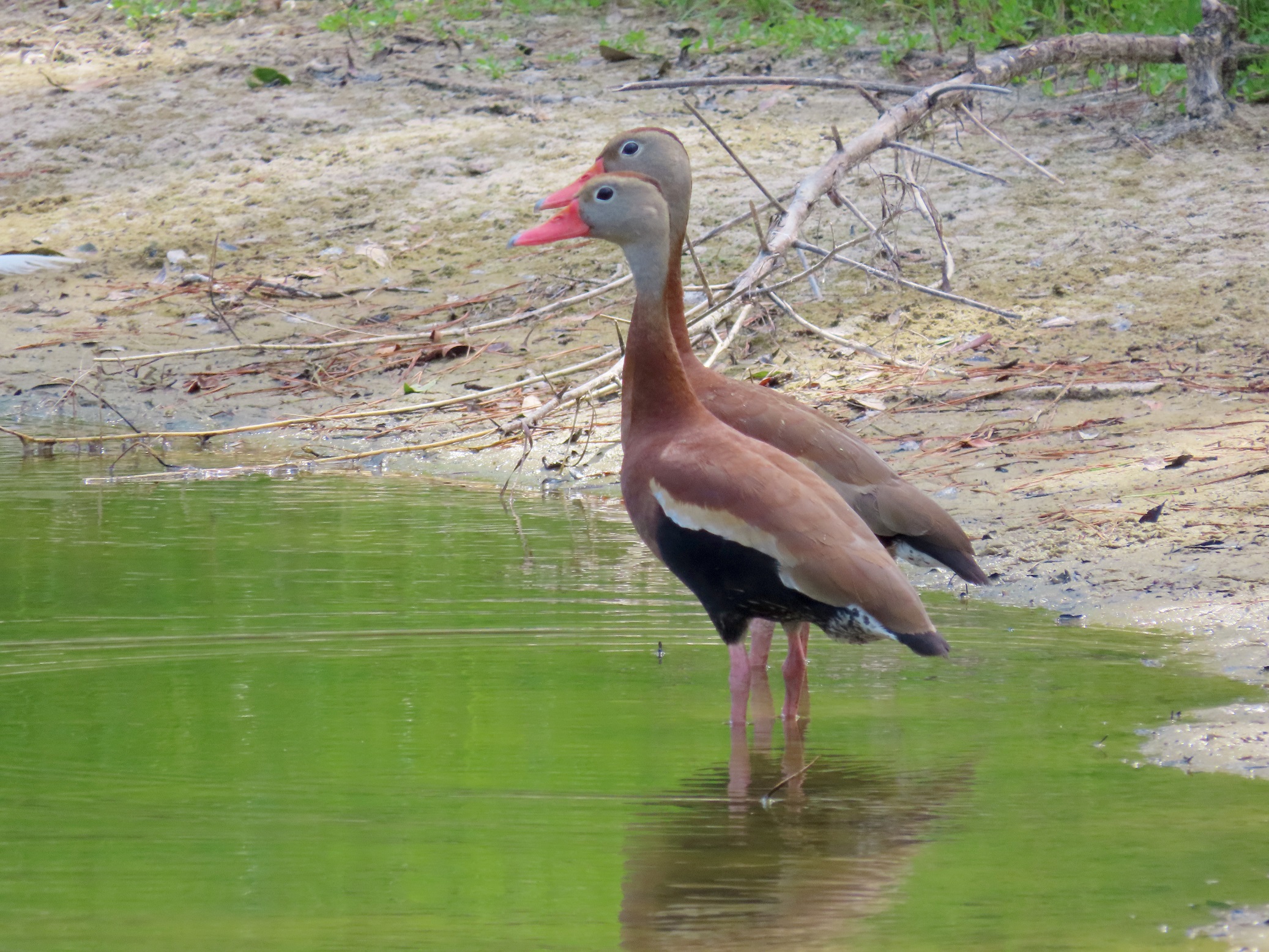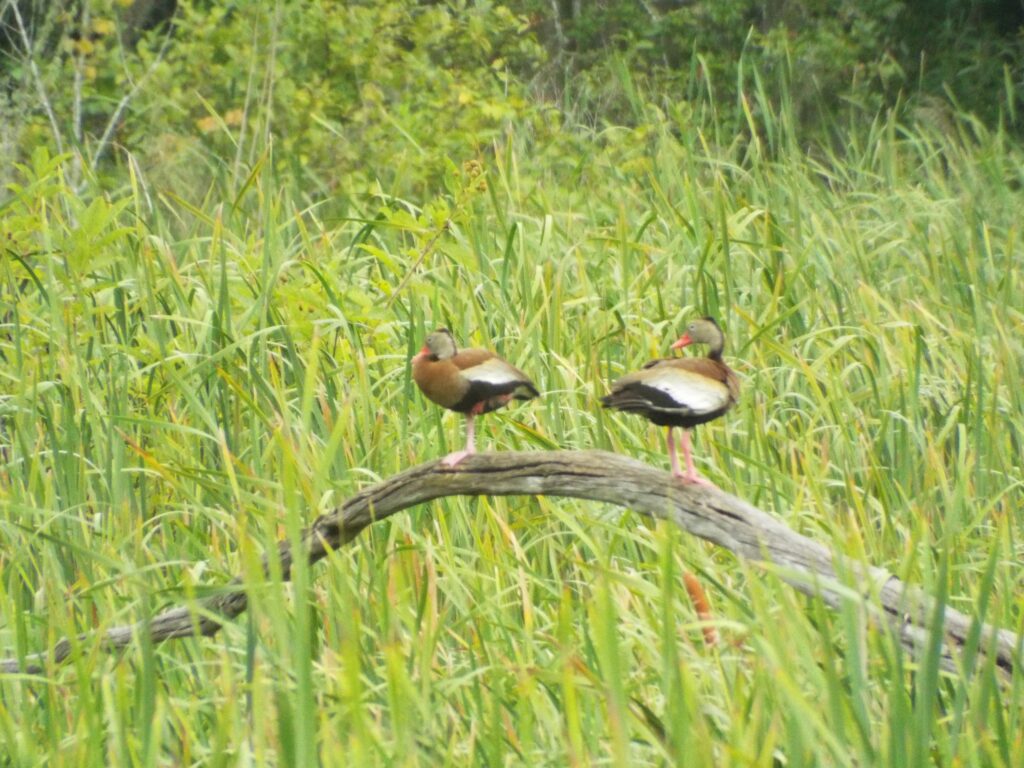


This week for Flora and Fauna Friday, we have an odd duck making its way up from down south, the Black-bellied Whistling Duck (Dendrocygna autumnalis).
Black-bellied Whistling Ducks are peculiar creatures. Somewhere between a duck and a goose in appearance and similar in behavior in many respects to a Wood Duck, they’re just plumb an odd duck. As they say, if it looks like a duck, swims like a duck, and quacks like a duck, it’s probably a duck. Well this duck looks funny and can’t quack. So you be the judge. Long pink legs, a stout pink and orange bill, a beady black eye set in a heavy white eye-ring, khaki head, brown crown, chestnut-brown chest and back, white wing coverts, and a trademark black belly make them a unmistakable bird both on the wing, on the ground, or in the trees. Black-bellied whistling Ducks love to perch on trees or stumps. Their genus name “Dendrocygna” literally means “tree swan”. It’s not a bad name given they’re cavity nesters. Much like a Wood Duck, Black-bellied Whistling Ducks nest in old Pileated Woodpecker cavities carved in trees overhanging the water. They can lay up to twenty eggs. The day after their ducklings hatch, they leap straight out the nest and freefall to the water! Black-bellied Whistling Ducks are also at home on dry ground and can readily be seen perched along pond banks, standing tall with a straight posture on long legs, or foraging for grass and grains through lawns and fields like a goose. Even still, they spend a good deal of their time in the water, feeding on vegetation and avoiding predators. So these ducks are quite adaptable! The call of the Black-bellied Whistling Duck is a wheezing whistle, sounding somewhere between a Wood Duck’s cooing and a shorebird’s mutterings.
Here in the Lowcountry, Black-bellied Whistling Ducks can be found in shallow ponds or in freshwater and brackish impoundments along the coast, especially within the ACE Basin. However, it wasn’t always like this. Over much of the last century, the Fulvous Whistling Duck (D. bicolor) was an irregular visitor to the Lowcountry. Then, in the 1990s, the Fulvous Whistling Ducks stopped coming and, about the same time, the Black-bellied Whistling Ducks start appearing. In just the last decade, their numbers in South Carolina have increased by an order of magnitude. Historically, the Black-bellied Whistling Duck has been limited to the American tropics and South Texas. In about the 1970s, a critical mass of Black-bellied Whistling Ducks strayed into the Florida peninsula. At which point they established a permanent breeding population. From those few pioneers, they multiplied and spread outward and upward to occupy much of Florida. Some enterprising young ducks eventually made their way north along the Atlantic and found the well-kept duck fields of the sub-tropical ACE Basin festooned with vacant, low-rent Wood Duck boxes. You could liken it to the Promised Land for this peculiar duck. In just the last ten years they’ve established a breeding population in the ACE Basin, particularly on Edisto Island. I’ve seen more and more of their ducklings with each passing year and pairs appearing on the banks of most all our small ponds.